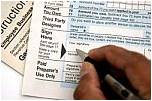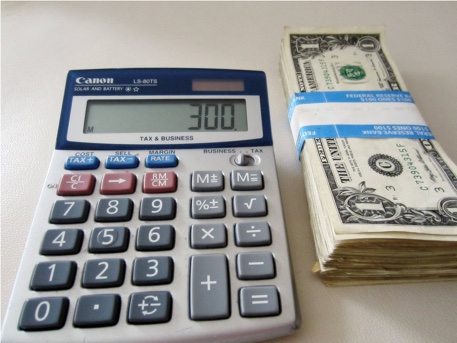Our top-rated tool is like working with a professional every step of the way.

Create 1099-Misc Form in less than 5 minutes.

Professionally reviewed

Print and export to word or PDF in seconds
The 1099-MISC is used to report certain types of non-employee income. As of the 2020 tax year, the 1099-MISC is now only used to report the following types of income worth at least $600:
Rents
Prizes and awards
Other income payments
Cash paid from a notional principal contract made to an individual, partnership, or an estate
Fishing boat proceeds
Medical and health care payments
Crop insurance proceeds
Gross proceeds paid to a lawyer
Section 409A deferrals
Nonqualified deferral compensation.
Additionally, use a a Form 1099-MISC for:
At least $10 in royalties or broker payments in lieu of dividends or tax-exempt interest.
To report that you made direct sales of at least $5,000 of consumer products to a buyer for resale anywhere other than a permanent retail establishment.
Compensation for freelancers and independent contractors are no longer reported using a 1099-MISC. Instead, they are reported using a 1099-NEC.
This document, technically known as the 1099-MISC Form, is a tax document that confuses. Who gets one? Who doesn't? Do I need to send them out? Many a bewildered business owner just decides not to bother with it because they just don't know what to do. Fortunately, this form is relatively simple to understand and easy to fill out once you grasp the basics of completing the form and who needs to receive one.
The IRS provides specific and clear instructions on when a 1099-MISC must be used. For example, if you received at least $600 in rental income, you would use a 1099-MISC. If you paid a lawyer at least $600 for legal services of some kind for your business, you can send them a 1099-MISC. If you received a prize or an award worth at least $600 or if you give out a prize worth at least $600, a 1099-MISC is required. If you were paying an independent contractor or freelancer for at least $600 in services, you would use a 1099-NEC.
The individual or business receiving a 1099-MISC can use it in addition to or in place of the W-2 that they would win in a standard employment arrangement.
As previously mentioned, it is also used to report a prize or award from a business. It reminds the recipient that they must pay taxes on that item or income (if they haven't done so already). It provides documentation that tells them exactly how much they've received from your business.
Don't delay or skip sending out the document by the end of January for the previous tax year. Failing to send it out as required can be punishable by fines of $60.00 to $330.00 per form.
If the IRS proves that a business intentionally disregarded the law when they failed to send out the proper form, the penalty starts at $660.00 per missed statement and with no maximum.
There are quite a few exceptions for which you do not need to send out a 1099-MISC (although this does not mean that the income is not taxable for the recipient). You're not required to send one to real estate agents or sellers of merchandise, storage, freight, etc. However, you are required to send one to any lawyer that you paid more than $600 to in a calendar year, even if they work with a law firm.
The new Form 1099-NEC is for employers to document non-employee compensation for independent contractors and freelancers. Independent contractors must receive Copy B of the 1099-NEC in order to include it with their tax returns.
These conditions must be met to report payment for non-employee compensation:
The payment made to someone other than an employee, such as an independent contractor or freelancer who completes a temporary assignment.
The payment must be made for projects and services in the course of your trade or business.
The payments made to the payee must be at least $600 during the year.
As aforementioned, payers are required to provide a Form 1099-NEC to the payee and file it with the IRS by January 31st of the following year.
A W-2 Form, also known as a Wage and Tax Statement, is a form that an employer completes and provides to the employee to complete their tax return. Form W-2 must contain certain information, including wages earned and state, federal, and other taxes withheld from an employee's earnings. The Form W-2 must be provided to employees by January 31. Employers must also file a copy with the Social Security Administration to keep them aware of an employee's earnings by January 31.
If you need to complete it, make sure you include all the required information. You will also need the employee's personal information, such as their full legal name, address, social security number, and employee ID. Check for accuracy. Using the wrong information could cause problems for both the employer and the employee when they file their income tax return.
Please note: this form is only used for employees and not self-employed independent contractors or freelancers.
The W-9, or Request for Taxpayer Identification Number and Certification form, provides a business with relevant personal information about an independent contractor (IC) or freelancer for tax purposes in the United States. The form asks for information such as the IC's name, address, social security number (SSN), and more. The data is used to generate a 1099-NEC. The W-9 Form is an essential tool for employers to gather information about contractors for income tax purposes. Verifying the information on this form and keeping it up-to-date ensures you collected accurate personal information.
Form W-9 should be reviewed and updated yearly. However, if a contractor provides you with an updated address or a name change, those changes may be recorded for use. The business should retain the information on this form for several years. It should not be sent to the Internal Revenue Service. Remember that it is a tool to gather specific information that a business needs to complete a 1099-NEC if the contractor earns more than a certain amount during the tax year.
Click here to get started now!
“I am very pleased with FormSwift products and have already recommended them to a number of my friends. The ease of creating documents has saved me countless hours.”
-Carrie L.
"I love FormSwift. There have been so many new documents added since first signing up. They walk you through every step. Great job and thanks for everything you guys do for making this happen."
-John M.
"FormSwift was very easy to use, even for someone who is not very tech savvy like me. Will use again."
-Phil T.
Any employer who has paid more than $600 of miscellaneous income (hence the "MISC" in the name) to an independent contractor or attorney, or who has issued more than $10 in royalty payments, is typically required by the U.S. Internal Revenue Service to complete and send a 1099-MISC tax form to the IRS along with a copy to the recipient of the funds. The payer also will generally retain a copy of the 1099-MISC form for his or her own records. Employers can acquire a fillable 1900 form by calling 1-800-TAX-FORM to request it or by navigating the website of the IRS, which is located at www.irs.gov.
Once you've received your copy of the fillable 1099 form from the IRS, you'll want to familiarize yourself with the various fields, or boxes to be filled in, on the form. Upon first glance, it might seem like the IRS has packed a large number of fields onto that little 1900-misc form, which is hardly more than half a page in length. However, when you break it down and take it one field at a time, it's really not so complicated after all. Let's take a closer look and see what those little boxes are all about.
Under the checkboxes that say, "VOID," and "CORRECTED" (which are only to be used in special circumstances), you'll find in the upper left corner a relatively large field for the payer's name and basic contact information. Under that large box will be two smaller fields: one on the left for the payer's federal identification number, and one on the right for the recipient's identification number (that's a fancy way of referring to his or her social security number, though it could also be an individual taxpayer identification number (ITIN) or adoption taxpayer identification number (ATIN)).
Interestingly, even though the contact information for the payer was just one large box, the fields for the recipient's name, street address, and city/state/zip code are all separated. These separated fields are located under the fields for the federal identification numbers of the payer and recipient of the 1099-misc form. Underneath those fields are the account number field and the "2nd TIN not." field. The account number is generally to be filled if the payer has multiple accounts for a recipient for whom he is filing more than one Form 1099-MISC , while the "2nd TIN not." field is to be filled with an "X" mark if the payer has been notified by the IRS twice within three calendar years that the payee had provided an incorrect TIN. In the two fields below that, if there are any applicable Section 409A deferrals or income, that is where this would be indicated.
On the right side of the form, the fields are numbered and are therefore easier to identify. Directly in the middle of the form will be a very commonly used field: nonemployee compensation, or field number seven. However, this is not the only type of payment that warrants the issuance of a 1099-MISC, so this popular field is surrounded by other fields, some more commonly used than others. These include fields one through three, which signify rents, royalties, and other income; fishing boat proceeds, or field number five; Payer-made direct sales of $5,000 or more of consumer products to a buyer (recipient) for resale, or field number seven; field number 10, which indicates crop insurance proceeds; and fields thirteen and fourteen, which indicate excess golden parachute payments and gross proceeds paid to an attorney, respectively. (Notably, boxes eleven and twelve are shaded in and can be ignored).
Further to the right side of the form, there are fields four, six, and eight. Fields six and eight represent more types of payments that may have been made to the recipient: medical and health care payments, and substitute payments in lieu of dividends or interest. Field four, meanwhile, indicate not payments, but rather any federal income tax withheld from the recipient. Finally, toward the bottom right-hand corner are fields sixteen through eighteen, known as "state information." These fields are only provided for the payer's convenience, and they do not need to be filled by the payer.
That's really all there is to it: eighteen fields, many of which don't need to be filled by the majority of payers. Payers who familiarize themselves with these fields will soon discover that the 1099-misc isn't so complicated after all.
If you are an employer, there is a distinct possibility that you may be required by the U.S. Internal Revenue Service to file a form known as 1099-MISC. This tax form is not to be confused with a W-2 form , which is used by employers to report an employee's annual wages as well as the whatever taxes were withheld from that employee's paycheck. In contrast, this form is to be filed by any employer who has paid more than $600 of miscellaneous income to an independent contractor or attorney. It would also need to be filed by an employer who has issued more than $10 in royalty payments to any recipient. A copy of the form would be sent to the IRS, and another copy would be forwarded to the recipient of the funds. In addition, it is expected that the payer would retain a copy of the form for his or her own records.
Payers who are required to file a 1099-MISC will need to know, for starters, where to get this form. Acquiring a fillable 1099 form is not difficult if you know where to look. A fillable 1099 form will be sent to you if you call 1-800-TAX-FORM and request it. To find the form online, log on to the Internet and navigate the website of the IRS, which is located at www.irs.gov. That website has a search box, which will make it easier to find the form online.
Completing and filing this tax form are easier than you might think. In fact, you may discover that many of the fields (or fillable boxes) on the form won't even need to be filled. Fields 11 and 12 are perfect examples of this, as they are completely shaded in and therefore can be ignored. Furthermore, fields 15a, 16, 17, and 18 are entirely optional and hence do not need to be completed. Then there are fields which will only need to be completed by a relatively small, highly specialized segment of the employer population; examples would include fields 5 (fishing boat proceeds), 10 (crop insurance proceeds), 13 (excess golden parachute payments), and 15b (Section 409A income). However, all employers who are required to file this form will need to complete the fields on the left side of the 1099 form, which indicate both the employer's contact information and federal identification number as well as those of the recipient . The applicable fields indicating nonemployee compensation, royalties, rents, and other income should also be completed by the payer.
As alluded to earlier, if you are the payer then you will need to fill out multiple copies of the 1099-MISC form. Copy A must be sent to the IRS, and you may also need to send Copy 1 to your state's tax department. Copy B will need to be sent to the payee or recipient, and Copy 2 is to be filed with the recipient's state income tax return if required. Finally there is Copy C, which is for you, the payer, to retain for your own records.
Filing due dates will vary each tax year, but if you make sure to file all copies of the form by the end of January, then you (the payer) will likely be in compliance. The specific mailing address to send Copy A to the IRS may differ according to the payer's location, so it is advisable to refer to the "Instructions for form 1099-MISC," which is available via www.irs.gov. It may be more convenient for you to file electronically, but in order to do that, you must have certain software that can generate a file according to the specifications found in Pub. 1220, Specifications for Electronic Filing of Forms 1097, 1098, 1099, 3921, 3922, 5498, 8935, and W-2G.
No matter how you choose to file it, it should not be extremely difficult or burdensome to file a form 1099-MISC. The important thing is to file it in a timely manner and make sure that both the payee and the IRS receive their copies. For further assistance with this, you can call the designated IRS information reporting customer service site toll-free at 1-866-455-7438.
 The 1099 form, technically known as the 1099 misc form, is one
tax document
that causes a lot of confusion. Who gets one? Who doesn’t? Do I need to send them out, or not? Many a bewildered business owner just decides not to bother with the 1099-misc form at all, for the simple reason that they just don’t know what to do. Fortunately, this form is fairly simple to understand and easy to fill out once you understand what it is – and who needs to get one.
The 1099 form, technically known as the 1099 misc form, is one
tax document
that causes a lot of confusion. Who gets one? Who doesn’t? Do I need to send them out, or not? Many a bewildered business owner just decides not to bother with the 1099-misc form at all, for the simple reason that they just don’t know what to do. Fortunately, this form is fairly simple to understand and easy to fill out once you understand what it is – and who needs to get one.
If you are a business owner, you will need to fill out and send a 1099-misc 2015 to anyone that you paid $600.00 or more to. Although there are limited exceptions, this can be money that was paid for services, rents, prizes and anything else that was income for someone else. The most common use of the 1099 form is to pay freelancers, handymen or anyone else that provides a service, but isn’t on your payroll. It’s important to note that 1099 misc forms only need to be sent out for payments related to your business only, and not for your personal use.
There are quite a few exceptions for which you do not need to send out a 1099 form. It’s important to know these to save yourself both time and unnecessary paperwork. You are not required to send a 1099 form to real estate agents or sellers of merchandise, storage, freight, etc. Surprisingly, you are required to send a 1099 form to any lawyer that you paid more than $600 to in a calendar year, even if they belong to a firm. Because many businesses are not aware of this particular requirement, it often results in a failure to fill out the 1099 form for attorneys.
The individual or business receiving the 1099-misc form can use that 1099-misc form in addition to or in place of the W-2 that they would receive in a standard employment arrangement . If someone receives a prize or award from you as a business then that needs to be reported via the 1099 misc form as well. Basically, the 1099 misc form reminds the recipient that they have to pay taxes on that income (if they haven‘t done so already). It also gives them documentation to refer to when doing their taxes that lets them know exactly how much they’ve received from your business.
If you have made any payments that require a 1099 form, it’s important not to delay or skip sending them out. Many businesses try to pass on this tedious extra step, and it can be very costly. Failing to send out the 1099 misc form as required can be punished by fines of $30.00 to $100.00 per form . If the IRS can proven that a business disregarded the law intentionally when they failed to send out proper 1099-misc forms, the penalty starts at $250.00 per missed statement – with no maximum.
 Taxpayers receive a
variety of documents
outlining their annual earnings in the months prior to everyone’s favorite national pastime: Tax Day. Most employed individuals are familiar with the W-2 form, however, the W-2 is just one of many information returns forms used to report income to the Internal Revenue Service. Just as the W-2 form reports income earned by employees, the 1099-misc 2015 form reports all non-employee compensation. It’s often associated with independent contractors such as freelance writers, or individuals who are self-employed. However, the form has uses beyond those.
Taxpayers receive a
variety of documents
outlining their annual earnings in the months prior to everyone’s favorite national pastime: Tax Day. Most employed individuals are familiar with the W-2 form, however, the W-2 is just one of many information returns forms used to report income to the Internal Revenue Service. Just as the W-2 form reports income earned by employees, the 1099-misc 2015 form reports all non-employee compensation. It’s often associated with independent contractors such as freelance writers, or individuals who are self-employed. However, the form has uses beyond those.
The 1099 form has varied applications. The 1099 misc form reports all Miscellaneous Income; anything that does not have a place on standard tax forms belongs on a 1099 misc. It must be filed for royalties or broker payments of $10 or more. The 1099 misc form is also required for any payment of $600 or more made during the year for: rents, services, prizes and awards, medical and healthcare bills, attorney costs, crop insurance proceeds, fish (or other aquatic life) purchased in cash from anyone in the fishing business, and cash payments from notional principal contracts to an individual, partnership, or estate. The 1099-misc form is required for any proceeds from the sale of a boat, even if they are less than $600. Additionally, the 1099-misc form applies to direct sales of at least $5,000 of consumer products to a buyer for resale anywhere other than a permanent resale establishment. Finally a 1099 misc form must be filed for any person from whom the taxpayer has withheld any amount of federal income tax such as under the backup withholding rules.
The form must include the names, addresses, and federal identification numbers of the payer and the recipient. An account number is required if the payer has multiple accounts for a recipient whom they are filing multiple 1099 forms for. Each type of miscellaneous payment then has a specific box on the 1099-misc form:
Box 1. Rents
Box 2. Royalties
Box 3. Other Income
Box 4. Federal Income Tax Withheld
Box 5. Fishing Boat Proceeds
Box 6. Medical and Health Care Payments
Box 7. Nonemployee Compensation
Box 8. Substitute Payments In Lieu of Dividends or Interest
Box 9. Payer Made Direct Sales of $5,000 or More
Box 10. Crop Insurance Proceeds
Box 13. Excess Golden Parachute Payments
Box 14. Gross Proceeds Paid to an Attorney
Box 15a. Section 409A Deferrals
Box 15b. Section 409A Income
Boxes 16-18. State Information
Generally, it is simple to figure out where to record the payment in question. However, certain boxes encompass payment types that may not be intuitive. For example, Box 7 includes expenses incurred for the use of an entertainment facility as nonemployee compensation. Box 6 deals not only with federal income tax withheld from backup withholding, but also from payments made to Indian gaming revenues. Box 3, the miscellaneous section of the miscellaneous income form, is specifically the place to record prizes and awards that are not from services performed.
Once completed, the payer must send a copy of the 1099-misc form to the IRS and a copy to the paid individual.